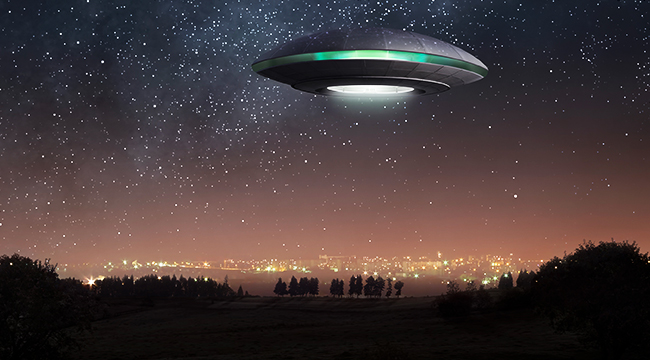
We, as a species, really, really want to find aliens. Even if they can destroy us all with an email. But finding potential evidence of life on Mars isn’t really in the mission brief for NASA’s Mars rover, Curiosity. Still, a citizen scientist is calling NASA out for ignoring potential fossil evidence of life on Mars, something the tabloids have been all too eager to run with.



Despite the tone, though, Barry DiGregorio isn’t a crackpot, and he isn’t claiming there are hidden temples under Mars or something ridiculous. Instead, he’s making an argument NASA should spend a little more time studying what’s undeniably a scientific long shot, but it’s one that might pay off.
As for he cover-up claims… well, maybe that’s a little overblown. Here’s what’s going on:
- It’s not alien footprints DiGregorio is talking about, per se, but ‘trace fossils:’ A ‘trace fossil’ is basically anything an animal does to change the Earth preserved in the fossil records. Yes, that includes footprints, but animals do a lot with the earth. They dig burrows, they go to the bathroom on it, they dig food out of it, and so on. Finding these trace fossils can be tricky, but they can be exceedingly useful when confirmed.
- DiGregorio has spent years arguing there’s signs of simple life, deep in Mars’ past: The ‘alien life’ DiGregorio is convinced is on Mars is not little green men. Basically, he’s looking for signs of Martian microbes or simple life like earthworms. He’s so concerned, in fact, that he wants samples from Mars carefully isolated to keep potentially living Martian bugs out of our biosphere. He’s done work comparing the oldest known trace fossils, from the Ordovician period in the Paleozoic and believes that there’s enough comparison between those and the rocks we’ve seen from Mars that we’ve potentially got signs of alien life on our hands.
- NASA has a competing theory, and to be fair it better fits what we know about Mars so far: NASA believes that what DiGregorio argues is signs of simple alien life was actually caused by crystals forming as water on Mars dried up. It’s a given at this point that Mars was once a wet planet, so NASA is doing what scientists do; working off the evidence they have availible.
- So a cover-up, like DiGregorio seems to think is happening, is a bit unlikely: If NASA could prove there was once life on Mars, that would be a gigantic scientific deal. It wouldn’t just confirm the existence of alien life, it’d also mean that a planet similar to our own somehow became a dried-out rock. Leaving aside the entirety of human society suddenly losing their sh*t over aliens, it would also make going to Mars an international priority to figure out what happened to it, so we could keep it from happening to us. NASA doesn’t really have a lot of incentive to cover up bulletproof evidence of alien life. But it doesn’t help that they’ve been here before, with similar evidence, and got burned as what was presented in the media as a slam dunk turned out to be a bit more complicated than that.
- This doesn’t mean DiGregorio is wrong, just that it’s going to take a while, possibly years, to figure out if he’s right: We’re talking about tiny cracks in giant rocks 34 million miles from Earth, being looked at by a robot. NASA might never be able to prove either hypothesis correct without sending another robot or a human out there to take a look.
So, that’s where we are. We potentially have more evidence there was life on Mars. But scientists don’t rush these things, and it might be a long time before we’ve got a solid call, either way.
